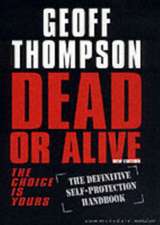Biosocial Criminology: New Directions in Theory and Research: Criminology and Justice Studies
Editat de Anthony Walsh, Kevin M. Beaveren Limba Engleză Paperback – oct 2008
| Toate formatele și edițiile | Preț | Express |
|---|---|---|
| Paperback (1) | 481.73 lei 43-57 zile | |
| Taylor & Francis – oct 2008 | 481.73 lei 43-57 zile | |
| Hardback (1) | 1295.78 lei 43-57 zile | |
| Taylor & Francis – oct 2008 | 1295.78 lei 43-57 zile |
Din seria Criminology and Justice Studies
- 15%
 Preț: 582.24 lei
Preț: 582.24 lei -
 Preț: 311.41 lei
Preț: 311.41 lei -
 Preț: 142.53 lei
Preț: 142.53 lei - 8%
 Preț: 391.95 lei
Preț: 391.95 lei - 8%
 Preț: 488.23 lei
Preț: 488.23 lei -
 Preț: 125.78 lei
Preț: 125.78 lei - 9%
 Preț: 640.26 lei
Preț: 640.26 lei - 8%
 Preț: 418.19 lei
Preț: 418.19 lei -
 Preț: 453.84 lei
Preț: 453.84 lei -
 Preț: 349.80 lei
Preț: 349.80 lei -
 Preț: 340.85 lei
Preț: 340.85 lei - 18%
 Preț: 1000.27 lei
Preț: 1000.27 lei - 15%
 Preț: 542.51 lei
Preț: 542.51 lei -
 Preț: 465.39 lei
Preț: 465.39 lei - 15%
 Preț: 578.93 lei
Preț: 578.93 lei - 22%
 Preț: 459.60 lei
Preț: 459.60 lei -
 Preț: 309.27 lei
Preț: 309.27 lei - 22%
 Preț: 431.22 lei
Preț: 431.22 lei - 21%
 Preț: 421.03 lei
Preț: 421.03 lei -
 Preț: 449.72 lei
Preț: 449.72 lei - 18%
 Preț: 1116.02 lei
Preț: 1116.02 lei - 23%
 Preț: 327.80 lei
Preț: 327.80 lei -
 Preț: 351.80 lei
Preț: 351.80 lei - 15%
 Preț: 624.48 lei
Preț: 624.48 lei - 15%
 Preț: 576.00 lei
Preț: 576.00 lei - 18%
 Preț: 808.08 lei
Preț: 808.08 lei -
 Preț: 382.91 lei
Preț: 382.91 lei
Preț: 481.73 lei
Preț vechi: 507.09 lei
-5% Nou
Puncte Express: 723
Preț estimativ în valută:
92.18€ • 96.49$ • 76.72£
92.18€ • 96.49$ • 76.72£
Carte tipărită la comandă
Livrare economică 31 martie-14 aprilie
Preluare comenzi: 021 569.72.76
Specificații
ISBN-13: 9780415989442
ISBN-10: 0415989442
Pagini: 304
Ilustrații: 5 black & white halftones, 35 black & white line drawings
Dimensiuni: 156 x 234 x 18 mm
Greutate: 0.56 kg
Ediția:1
Editura: Taylor & Francis
Colecția Routledge
Seria Criminology and Justice Studies
Locul publicării:Oxford, United Kingdom
ISBN-10: 0415989442
Pagini: 304
Ilustrații: 5 black & white halftones, 35 black & white line drawings
Dimensiuni: 156 x 234 x 18 mm
Greutate: 0.56 kg
Ediția:1
Editura: Taylor & Francis
Colecția Routledge
Seria Criminology and Justice Studies
Locul publicării:Oxford, United Kingdom
Public țintă
UndergraduateCuprins
I. Overview of the Biosocial Approach 1. Introduction to Biosocial Criminology 2. Criminal Behavior from Heritability to Epigenetics 3. Molecular Genetics and Crime 4. The Ghost in the 5. Evolutionary Psychology and Crime II. Applications to Important Correlates of Crime 6. Gender and Crime: An Evolutionary Perspective 7. Race 8. Crazy by Design: A Biosocial Approach to the Age-Crime Curve 9. Substance Abuse and Crime: Biosocial Foundations 10. Testosterone and Violence among Young Men III. Serious Violent Criminals 11. Neuroscience and the Holy Grail: Genetics and Career Criminality 12. Psychopathy IV. A Biosocial 13. No Longer Taboo
Notă biografică
Anthony Walsh (Ph.D Bowling Green State University) is Professor of Criminal Justice at Boise State University, Idaho. He is the author or editor of more than 20 books and scores of articles and essays on the interplay of biological, social, and cultural factors involving crime and criminality. He is author of the text Biosocial Criminology: Introduction and Integration.
http://cja.boisestate.edu/walsh.htm
Kevin Beaver (Ph.D. University of Cincinnati) is Assistant Professor of Criminal Justice at Florida State University, Tallahassee. He teaches courses on biosocial criminology and genetic / biological correlates of offending and is the author of “Do Parents Matter in Creating Self-Control in their Children? A Genetically Informed Test of Gottfredson and Hirschi’s Theory of Low Self-Control”, which was published in the Journal Criminology.
http://www.criminology.fsu.edu/p/faculty-kevin-beaver.php
http://cja.boisestate.edu/walsh.htm
Kevin Beaver (Ph.D. University of Cincinnati) is Assistant Professor of Criminal Justice at Florida State University, Tallahassee. He teaches courses on biosocial criminology and genetic / biological correlates of offending and is the author of “Do Parents Matter in Creating Self-Control in their Children? A Genetically Informed Test of Gottfredson and Hirschi’s Theory of Low Self-Control”, which was published in the Journal Criminology.
http://www.criminology.fsu.edu/p/faculty-kevin-beaver.php
Recenzii
"I am very excited and enthusiastic to see this manuscript about to be published. Routledge will be doing a great service to the discipline of criminology, its students, and the larger social scientific enterprise by doing so." Chris Gibson, University of Florida
"I am very enthusiastic to see this book published. It represents the cutting edge of theorizing and empirical research regarding the interaction between physiological and environmental perspectives. The research and concepts in this book will convince all criminologists that the biosocial perspective must be considered in all future theoretical developments regarding the explanation of criminal behavior. " Stephen G. Tibbetts, California State University, San Bernardino
"I am very enthusiastic to see this book published. It represents the cutting edge of theorizing and empirical research regarding the interaction between physiological and environmental perspectives. The research and concepts in this book will convince all criminologists that the biosocial perspective must be considered in all future theoretical developments regarding the explanation of criminal behavior. " Stephen G. Tibbetts, California State University, San Bernardino
Descriere
This book is designed to bring criminology into the twenty-first century by showing how leading criminologists have integrated aspects of the biological sciences into their discipline. These authors cover behavior and molecular genetics, epigenetics, evolutionary biology, and neuroscience, and apply them to various correlates of crime such as age, race, and gender. There are also chapters on substance abuse, psychopathy, career criminals, testosterone and treatment. While not trashing traditional ideas about these topics, the authors of these chapters show how biosocial concepts add to, complement, and strengthen those ideas. The book is uniquely valuable in that it brings together many of the leading figures in biosocial criminology to illustrate how the major issues and concerns of criminologists cannot be adequately addressed without understanding their genetic, hormonal, neurological, and evolutionary bases.
















